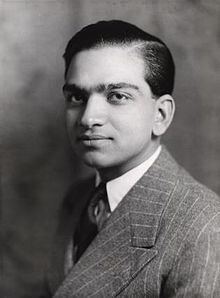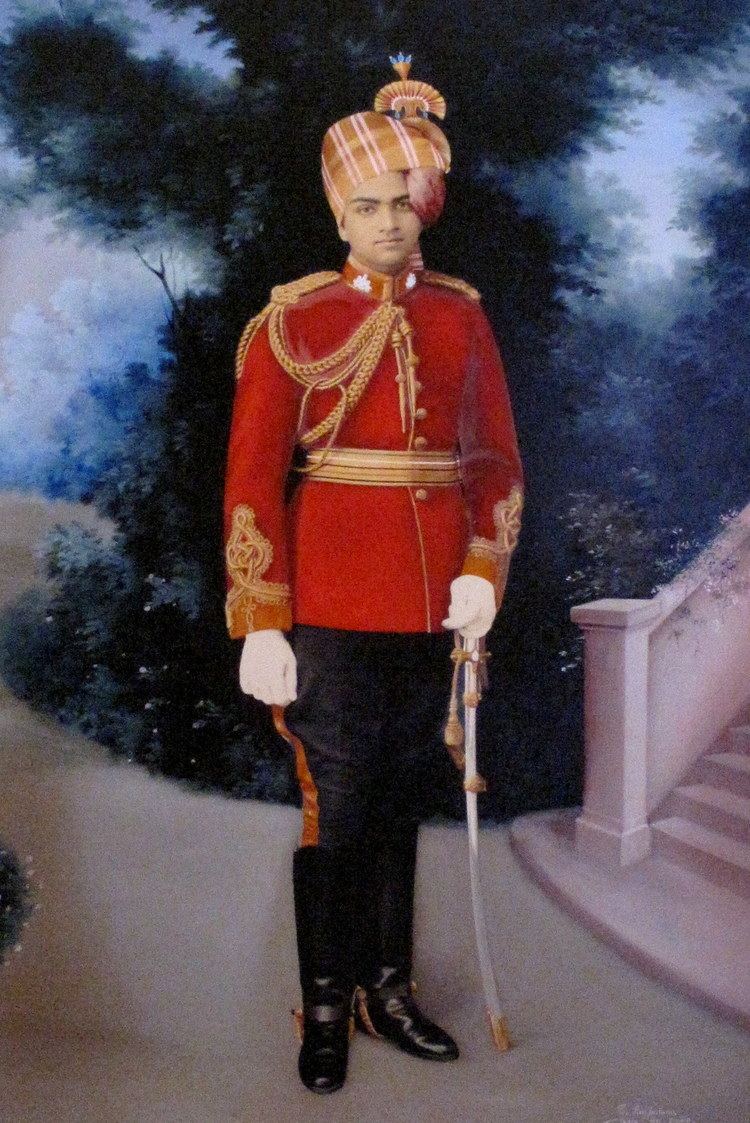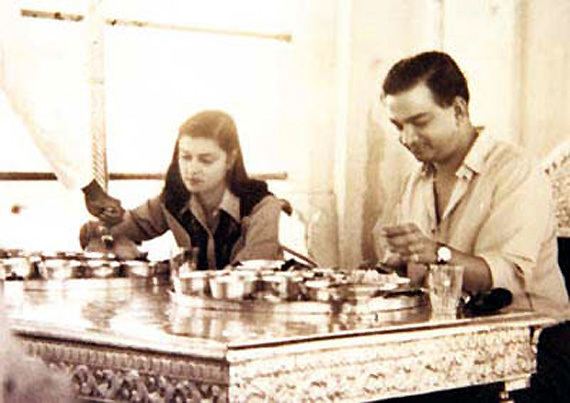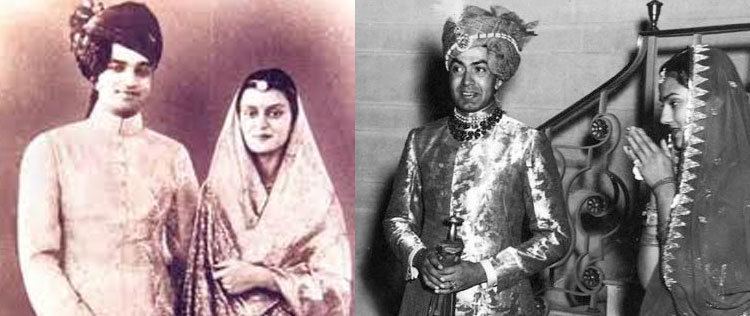Reign 1922–1948 Name Man II | Issue 4 sons and a daughter Coronation 18 September 1922 | |
 | ||
Children Bhawani Singh, Prince Jagat Singh, Prem Kumari, Prithviraj Singh, Jai Singh Parents Sawai Singh, Sugan Kunwar, Madho Singh II Similar People Gayatri Devi, Prince Jagat Singh, Bhawani Singh, Indira Devi, Diya Kumari | ||
Jaipur maharajah sawai man singh ii sits on his throne and bestows blessings on p hd stock footage
Maj. Gen. Maharaja Sir Sawai Man Singh II GCSI GCIE (b. Sawai Mor Mukut Singh; 21 August 1912 – 24 June 1970) was the last ruling Maharaja of Jaipur State belonging to Kachwaha clan of Rajputs. He ruled the princely state between 1922 and 1949, when the state acceded unto the Dominion of India. Thereafter, he held office as Rajpramukh of Rajasthan between 1949 and 1956. In later life, he served as Ambassador of India to Spain. He was also a notable sportsman and celebrated polo player.
Contents
- Jaipur maharajah sawai man singh ii sits on his throne and bestows blessings on p hd stock footage
- Hh swai man singh ii maharaja of jaipur state
- Early life
- Maharaja of Jaipur
- Marriages
- Children
- Full name and titles
- Death
- References

Hh swai man singh ii maharaja of jaipur state
Early life

Sawai Man Singh II, was born Mor Mukut Singh, the second son of Thakur Sawai Singh of Isarda by his wife Sugan Kunwar, a lady from Kotla village in Uttar Pradesh. His father was a nobleman belonging to the Kachwaha clan of Rajputs. Mor Mukut grew up in the dusty, walled township of Isarda, a chief Thikana of the Rajawat sub-clan which lies between the towns of Sawai Madhopur and Jaipur in present-day Rajasthan. His family was connected to the ruling house of Jaipur and Kotah (where his father's sister was married). The then-Maharaja of Jaipur, Sawai Madho Singh II, had been born the son of a former Thakur of Isarda and had been adopted into the ruling family of Jaipur. After giving him up for adoption, Madho Singh's actual father had in turn lacked for an heir. He adopted the son of a distant kinsman and was succeeded by that lad as Thakur of Isarda. That lad was Sawai Singh, father of Mor Mukut Singh. In this manner, Mor Mukut could be reckoned near kin to Maharaja Madho Singh II of Jaipur.

After being adopted to become Maharaja of Jaipur, Madho Singh II had numerous (no less than 65) children by various concubines, but the highly superstitious Maharaja was warned by a sage against having legitimate heirs and thus took great care not to impregnate his five wives. On 24 March 1921, Madho Singh II adopted Mor Mukut to be his son and heir. The boy was given the name "Man Singh" upon his adoption. Madho Singh II died on 7 September 1922 and was succeeded by Man Singh as Maharaja of Jaipur and head of the Kachwaha clan of Rajputs. The new Maharaja was eleven years old.
Maharaja of Jaipur

Upon obtaining his ruling powers, Man Singh embarked on a program of modernisation, creating infrastructure and founding numerous public institutions that would later result in Jaipur being selected the capital of Rajasthan. At the time of India's Independence in 1947, the maharaja acceded Jaipur to the Dominion of India and in March 1949 he merged the princely state with the new state of Rajasthan, surrendering his sovereignty and accepting the appointment of Rajpramukh of that state until the office was abolished when the Indian states were further re-organised in 1956. Although the Indian princes had relinquished their ruling powers, they remained entitled to their titles, privy purses and other privileges until the adoption of the 26th amendment to the Constitution of India on 28 December 1971. Accordingly, Man Singh II remained Maharaja of Jaipur until his death.

In 1958, Man Singh was one of several rulers who realised the potential of tourism in Rajasthan, turning Rambagh Palace into a luxury hotel. Under his rule various laws of land reform were first introduced in his state, such as the Jaipur Tenancy Act. Later in 1956, the Jagidari (feudal) form of political administration were abolished during the government of the Congress Party in India. In 1965, the Indian government appointed Sawai Man Singh, Indian Ambassador to Spain. Utilising his various contacts in Europe, he spent much of his time in Europe to ensue new military technology and arms-deal for the Indian army (Crewe).
He was especially noted as an enthusiastic (10-Goal) polo player, winning among other trophies the World Cup in 1933. During the 1950s, Man Singh owned Saint Hill Manor in East Grinstead, West Sussex, which was sold to L. Ron Hubbard, founder of Scientology in 1959.
Marriages
Man Singh II was married three times, and his three wives lived in the same household together, as per Indian custom. His first two marriages were to suitable brides chosen from the royal family of Jodhpur, whose Rajput heritage and social ranking were similar to his own. The senior Maharani, known within the palace as 'First her Highness,' was Marudhar Kunwar, sister of Sumer Singh, Maharaja of Jodhpur. She was about twelve years older than him and bore him two children, first a daughter, Prem Kumari and then his eldest son and heir, Bhawani Singh. His second wife was Maharani Kishore Kanwar, niece of his first wife and daughter of Maharaja Sumer Singh of Jodhpur. She was five years younger than him and bore him two sons. In 1940, Man Singh II married for the third and last time. His bride was the legendary beauty, Gayatri Devi of Cooch Behar, daughter of Maharaja Jitendra Narayan of Cooch Behar and Maharani Indira Devi, a princess of Baroda. She stands out among the Maharanis of Jaipur for having become a public figure and a celebrity of sorts, initially for being a fashion-conscious beauty and later for becoming a politician and parliamentarian. She bore him one son and survived him by thirty-nine years, dying in 2009.
Children
Man Singh was the father of four sons and a daughter, bore to him by his three wives. They were:
(one son)
Full name and titles
Death
In 1970, Man Singh had an accident while playing polo in Cirencester, England. He died later the same day. He was survived by his four sons. He was succeeded as Maharaja of Jaipur and head of the Kachwaha clan by his eldest son, Maharaja Sawai Bhawani Singh of Jaipur. Following his death Indira Gandhi was finally able to repress the power of India's former rulers in democratic India as they formed a large bulk of her opposition party, the Swatantra party.
A statue of Sawai Man Singh was installed at the Ram Niwas Bagh in Jaipur, the statue was unveiled at a grand function on 30 March 2005. A Cricket Stadium in Jaipur was named after him.
His successor, Maharaja Sawai Bhawani Singh of Jaipur died on 17 April 2011, aged 79.
